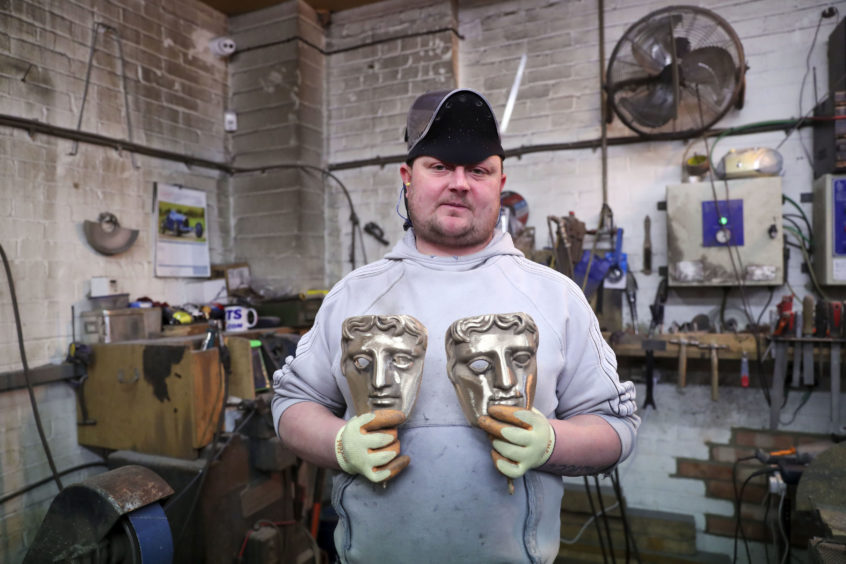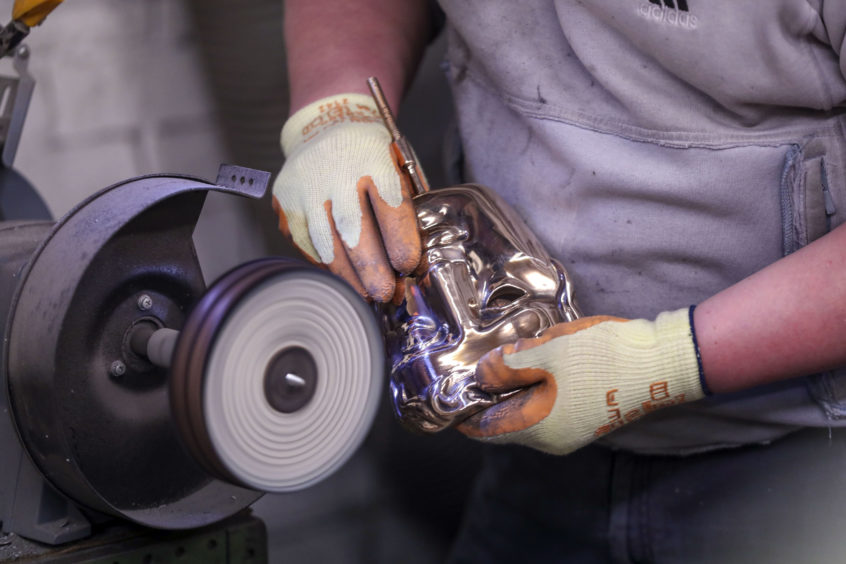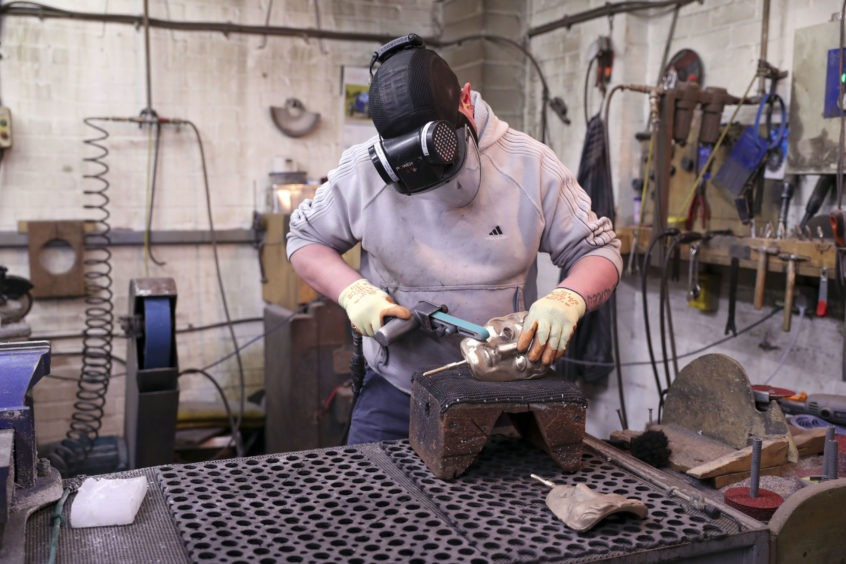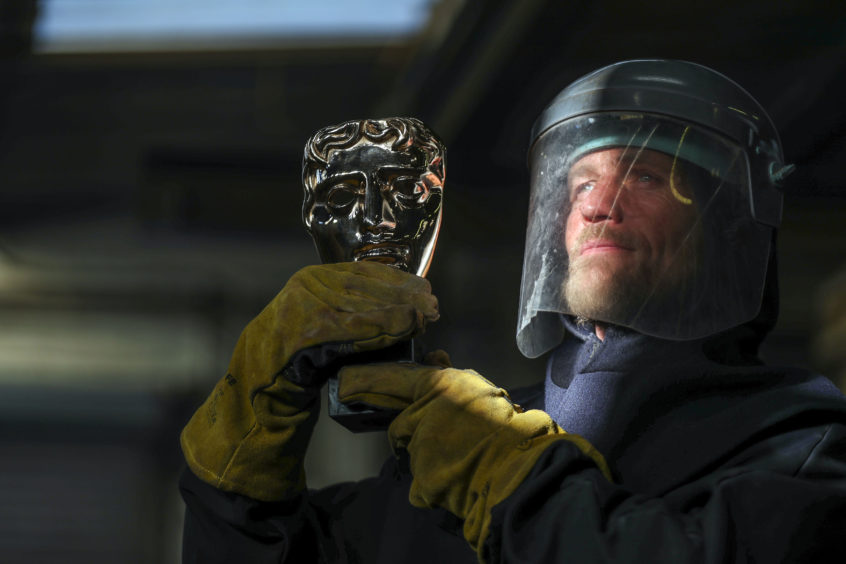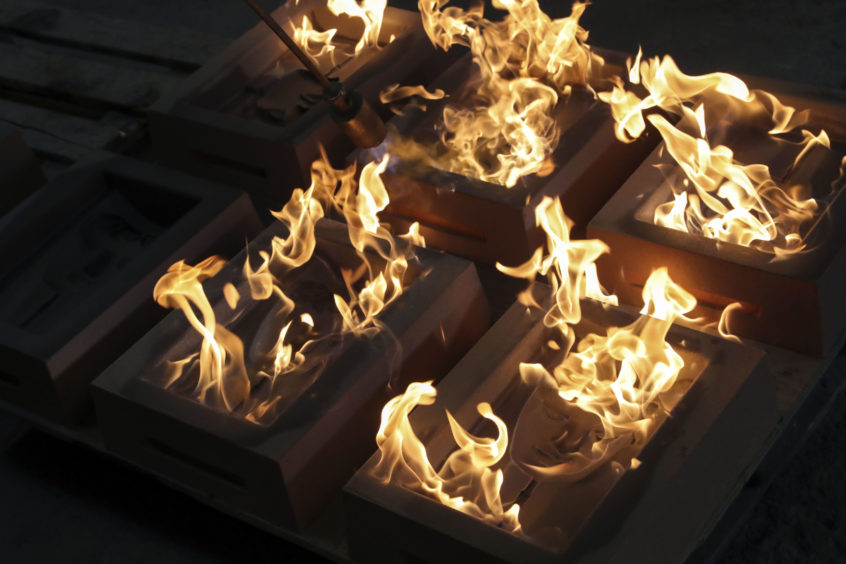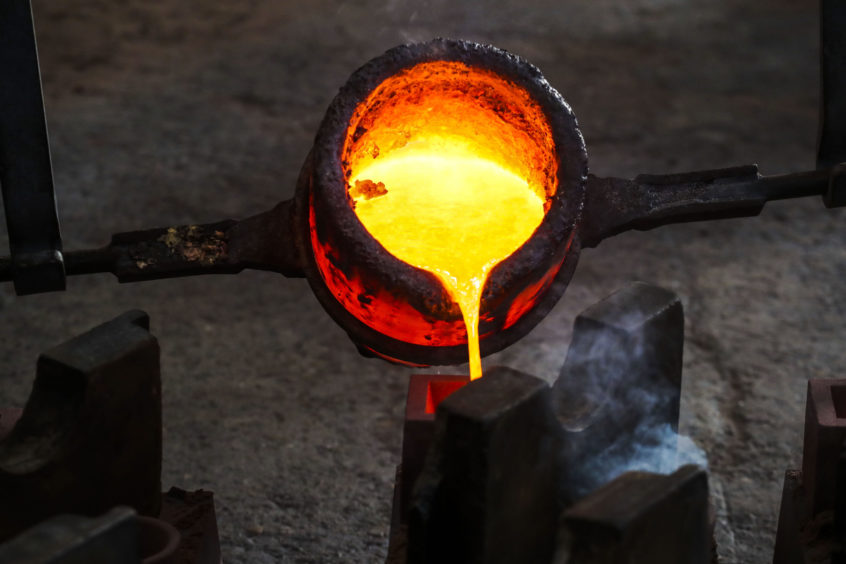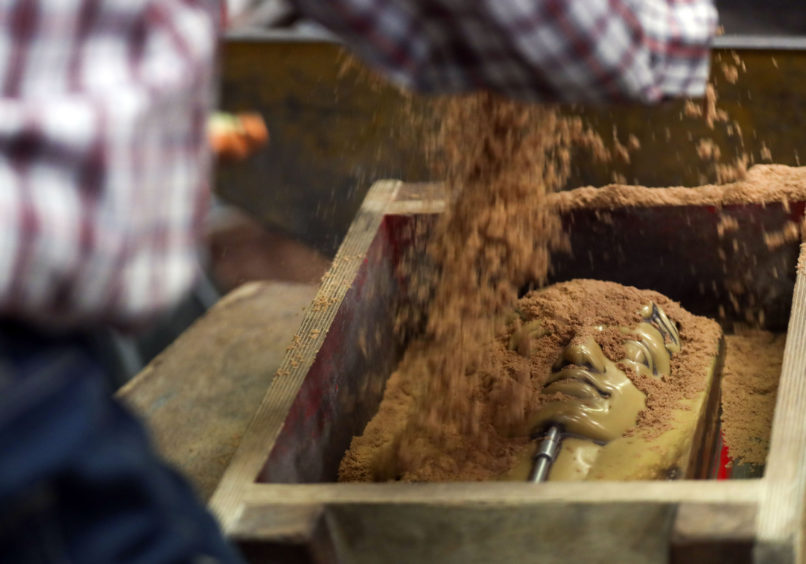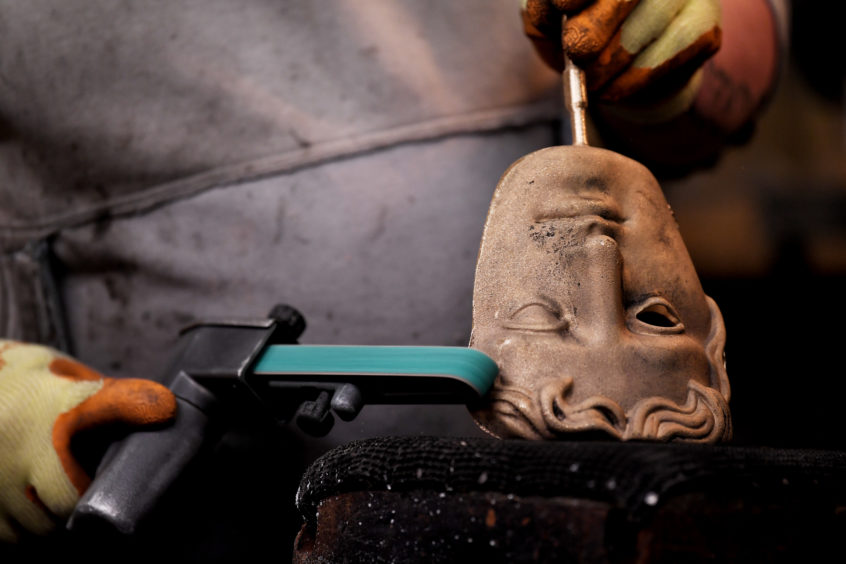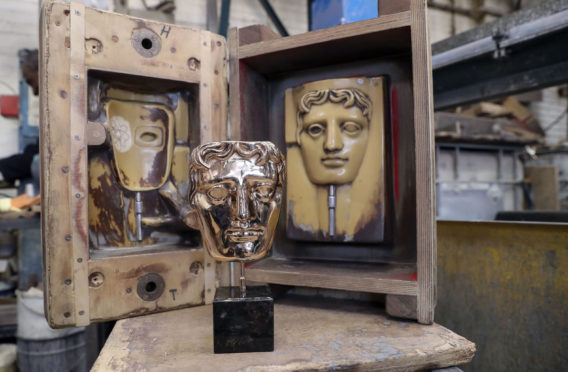
Bafta preparations are under way at a foundry in London, where the bronze masks are being cast ahead of the awards ceremony in less than two weeks’ time.
The trophies are hand-made at the factory in West Drayton in a process that has remained largely unchanged for around 40 years.
The casting of the Baftas is “the high point” of the year for New Pro Foundries, according to technical adviser Patrick Helly.
However, producing the awards ahead of the ceremony is not necessarily the end of the process, he added, as some recipients subsequently ask for their trophy to be repaired.
One Bafta winner asked for repair work to be carried out following a domestic incident, he said.
“In one instance, we were told that the Bafta had been thrown at the spouse and the Bafta was damaged, not the spouse.”
Mr Helly, who has been involved with the manufacture of the trophies since 1978, added that it is “quite good fun when we get asked to repair Baftas from people who have won them in previous years”.
“People might use them as a doorstop and the door has whacked against it and bent it,” he said.
For the foundry’s staff, watching the trophies being handed out is an enjoyable moment, he added.
“To our guys, they love seeing people picking up the Bafta and waving it around because that’s what they all do.”
The mask was created in 1955 by US sculptor Mitzi Cunliffe after she was commissioned to design the trophy.
It is based on the tragicomic mask of Ancient Greek theatre.
The awards are made from bronze, which is cast inside a sand casing before being polished and placed into its stand.
The casting process takes around three hours, with a total of around 280 trophies made each year in small batches.
This year’s awards ceremony, which is being hosted by TV presenter Graham Norton, will take place at the Royal Albert Hall on February 2.

Enjoy the convenience of having The Sunday Post delivered as a digital ePaper straight to your smartphone, tablet or computer.
Subscribe for only £5.49 a month and enjoy all the benefits of the printed paper as a digital replica.
Subscribe